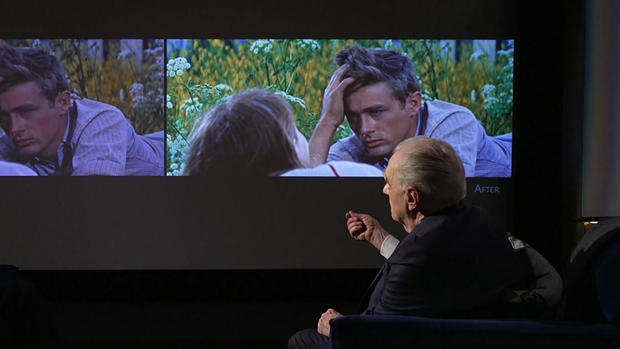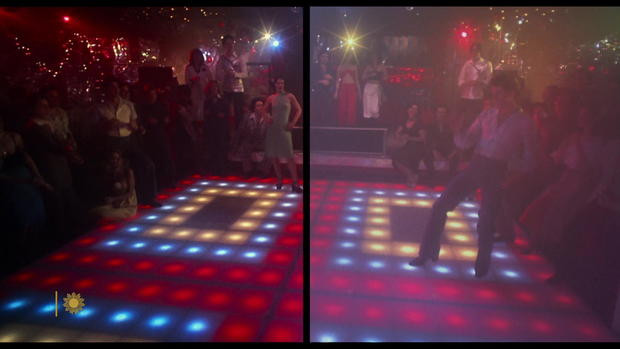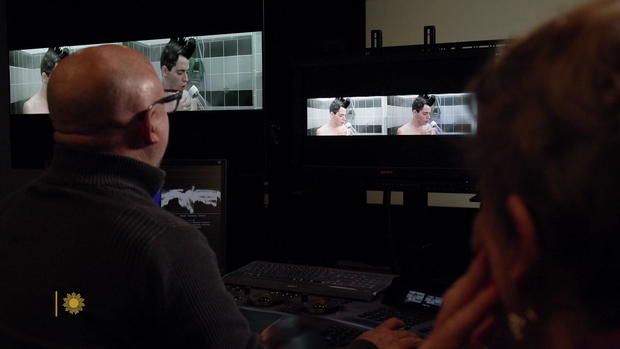Phoenix, our industry-leading restoration software, has been cropping up all over the place, much loved by professionals and freelancers alike – even Martin Scorsese uses Phoenix! We’ve rounded up a few of the times that Phoenix and restoration has been on our screens so you don’t miss out on any of the exciting possibilities that you can create with Filmworkz.

‘Martin Scorsese on the importance of film restoration’ – CBS News
Martin Scorsese has long been a campaigner for saving cinema’s heritage and preserving film footage, and now CBS have picked up on it.
Whilst Scorsese is more principally renowned for his cinematic masterpieces, he is also a devout preservationist. In 1990, along with several other leading filmmakers (the likes of Steven Spielberg, Francis Ford Coppola, Stanley Kubrick and George Lucas), The Film Foundation was established to protect and restore old films, as well as raising awareness, and have since restored over 950 films.
The fickle nature of film reel means that it is very susceptible to decomposition, and when film moved to colour, they used acetate film which fades after six years. This was partly why Scorsese filmed the iconic Raging Bull in black and white!

As a result, Scorsese led a campaign to get Eastman Kodak to develop a more stable film and wrote a letter to every important filmmaker saying “Everything we’re doing right now means absolutely nothing.” From this, he created a detailed list of all the films that should be saved.
The Foundation has partnered with Paramount (who also led an extraordinary effort to restore films, saving over 1,500 so far), with Andrea Kalas at the helm, who now oversees the archive at Paramount Pictures (CBS’ sister company).
“His encyclopaedic knowledge of film is literally unparalleled,” Kalas said. “It was amazing that he was able to do that, right, to just sit down with the incredible output of every studio, and just go, ‘Yep. Nope. Yep. No. Yep. No.’ It’s an important list. And it’s one that’s shared with us; it helps guide our preservation program, among other things.”
‘Film restoration: Saving our cinema heritage’ – CBS Sunday Morning
In an accompaniment to the article, CBS broadcasted their interview with Martin Scorsese about the legacy of cinema and the importance of its restoration. With more than 5 million people tuning in, Scorsese’s message about saving cinema’s heritage will have been watched by film lovers everywhere.
We spotted our very own Phoenix being used by the team at Martin Scorsese’s film foundation to restore some of the saved old footage. Using our software means that they can clean up any dust, dirt, scratches, or any other imperfections that might be affecting the quality of old film.
Check out minute 7:01 to catch a glimpse of Phoenix at work restoring films for Martin Scorsese:
‘Inside the Academy’s Quest to Help Filmmakers Preserve Digital Titles’ – Variety
Restoration and film preservation has been an increasingly prevalent topic in Hollywood over the last few years, and now The Academy of Motion Pictures Arts and Science has set up the Academy Digital Preservation Forum.
After speaking with many industry professionals, they created a space to share concerns about digital preservation, like which assets should be preserved, the costs of preservation, how to preserve digitally, and consumerism.
Led by Andrea Kalas, SVP Asset Management at Paramount Pictures, she has devoted her career to preservation, working at the BFI, Dreamworks SKG, and Discovery Communications.

In comments to concerns about future storage solutions if software solutions today become obsolete, Kalas says “If you have a proprietary format, you might need to change that format to something else that will be readable. Data lives on, and it’s constantly moving and migrating. You need to make sure nothing happens to it, and there are ways to do that.”
“There’s this approach of caring about those digits and that those digits are art. There’s a lot of work to be done, but there are a lot of people working on it.”
The Academy of Motion Picture Arts and Sciences are an important community in film, handing out the Oscars: “The Academy wanted to put its skin into the game to be a part of that movement, to start taking care of films in need of restoration,” said Mike Pogorzelski, director of the archive.
‘Dance Craze review – thrilling documentary captures the explosive energy of 2 Tone’ – The Guardian
The BFI’s latest release Dance Craze has been reviewed four stars at The Guardian, a film that was restored by the team at R3store and with the help of Phoenix, re-introducing generations to this two-tone classic and ode to ska music, which is a dazzling spectacle of dance, joy, and rhythm.
Two tone was a movement in the late 1970s born out of regional British cities under a period of economic turmoil, and was a take on the Ska music brought over by Jamaican immigrants in the 60s. Originally filmed in 1981, this film was shot with steadicams pointing out over the audience and dancing with the members of bands like Madness, The Specials, and several others, creating an immersive audience experience.

Peter Bradshaw commends the work of US director Joe Massot hybrid approach to filming the concert and interspersing it with clips of newsreels that complain about ‘young people’. Filmed on Super 35 and printed on 70mm, the team over at R3store used Phoenix technology to restore this forgotten footage, where they undertook extensive work to recover faded color, remove imperfections like scratches and dirt, and stabilise the image. The audio has also been remastered with a new Dolby Atmos upgrade, giving a breath of life into a thumping, ecstatic demand for hedonism.
Bradshaw continues: ‘The movie is a madeleine for people of my generation: summoning up the sweat of venues such as London’s Lyceum Ballroom in the Strand, it shudders with the bands’ inexhaustible jogging-on-the-spot energy, the kind of live show where the singer lets rip directly into the ecstatic faces of the people at the front, virtually snogging them.’
If you don’t have access to watching the film, listen to Dance Craze’s restoration artist, Doug Weir, talk to ‘Create Incredible’ about the process of its restoration.
